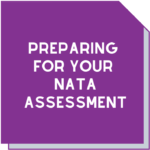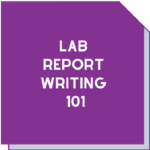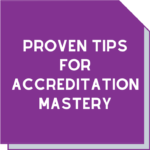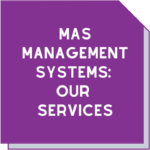How to keep NATA happy
 We know you’re busy. For business owners or managers, there’s always plenty of juggling to be done.
We know you’re busy. For business owners or managers, there’s always plenty of juggling to be done.
And with Covid restrictions thrown into the mix, you’d be forgiven for thinking that keeping an Accreditation Body happy is the last thing on your mind!
However, we also know that keeping your business processes and procedures up to scratch isn’t just about making sure your next NATA assessment goes well. It’s about maintaining those systems to ensure you’re working better and smarter.
But it doesn’t hurt to look at your system and see where they may be a blockage or two.
Equipment calibrations
For years, you were minding your own business and doing as NATA says for equipment calibrations.
But now they tell you that you might have to work out your own calibration frequencies and ‘prove’ that they are suitable. To add insult to injury, you’ve been told that calibrations on things like pipettes (that you’ve been doing since starting work in a lab), have never been done properly and you have to pay someone else to do them!
This doesn’t mean that lab staff are suddenly incompetent when it comes to performing something as simple as a pipette calibration.
But a good understanding of the sources of uncertainty in your methods (including your calibration methods) will help. You can make decisions about which equipment can be calibrated in-house and which ones really do need an expert hand.
One of our clients calculated the uncertainty budget for their pipette checks, and it was better than the external calibration that NATA was demanding. And it was traceable.
Getting to know your methods intimately by calculating measurement uncertainty (MU) properly will help you stand your ground and explain how your lab does meet the requirements for traceability in measurements. You will also have the evidence to show NATA and back your decisions on:
- competency assessments and training programs
- conducting equipment checks in-house or sending out for calibration
- purchasing new equipment
- improving method performance.
You can pull out the GUM, the Eurachem/CITAC Guide, the instructions from your professional body, or the notes from that course you went to and give it a go.
Alternatively you can contact us and we can help you work through this and run a training course for you and your people as well!
Root cause analysis
Of course you know how to do a root cause analysis (RCA). You’ve probably got a lovely system all set up and ready to go. Accreditation bodies are now making this a part of the post-assessment process for dealing with conditions for accreditation so it’s an even more vital part of your system.
The tricky part here is ensuring you’ve drilled down to the REAL root cause and implemented a corrective action that will solve the problem.
And remember, you need to document this process in line with the procedure laid out in your quality documents.
Our article on root cause analysis could help you ensure you’re on track. Even better would be attending our RCA training course!
Risk management
 There is an increased focus on risk management across the ISO standards.
There is an increased focus on risk management across the ISO standards.
Of course, risk influences every aspect of your business operations. That’s why having an effective risk management approach make good sense.
We’ve written previously about risk management and examined how risk and opportunity can go hand in hand.
Remember, you need to demonstrate to your Accreditation Body that you’ve considered risks and opportunities and your processes for dealing with these. And yes, we have a training course for this too…
Competence
Labs use ISO/IEC 17025 to implement a quality management system (QMS), with the goal of improving their ability to produce consistently valid and reliable results.
If you follow the requirements of the Standard, you’ll have only trained, skilled and authorised staff performing lab tasks. Those staff members must prove they know how to follow procedures, perform testing or calibration activities. They must be able to perform them correctly despite any errors or omissions in documented procedures. And they should be able to handle any problems that may arise.
Ensure your staff have the appropriate training. Make sure their training information is documented and current. Don’t forget to include any internal training on special processes or equipment.
Reporting
 Customers will use the report you submit as the basis for a decision. And by having an appropriate system in place you’re giving customers the confidence that the results they receive are consistent and repeatable.
Customers will use the report you submit as the basis for a decision. And by having an appropriate system in place you’re giving customers the confidence that the results they receive are consistent and repeatable.
There is natural variation in results due to the nature of testing. Your lab puts controls in place to reduce this range of variation. Evaluating the MU supports the validity of your results and provides information on this natural variation.
Sometimes this information is provided in the final report. This additional detail demonstrates your lab’s capacity to detect and evaluate errors and adds relevance to your report.
If you include your Accreditation Body’s endorsement on your report this must be correct. Add the tagline and additional wording if this is required. For example, the NATA tagline is ‘World Recognised Accreditation’ (check the NATA Rules for any additional wording you may need to use).
Finally, if you’re carrying out tests for which you’re not accredited, don’t include these results on an endorsed report.
Customers first
While this may seem obvious, one of the changes in the ISO/IEC 17025 2017 update was the increased emphasis on keeping the customer in mind.
Obviously, labs consider their customers and their needs. However, the standard wants labs to ensure customer needs are kept front of mind throughout the testing process.
Customers should have an expectation of confidentiality. They should have an option to express any concerns they may have about the lab’s work. The lab must also confirm that it takes these concerns seriously and will investigate any issues, keeping the customer informed of the progress and outcome.
Building trust with the customer through excellent service and prompt feedback doesn’t just make sense for labs. It makes good sense for all businesses.
We can help!
If anything you just read made you say ‘hmmm’, you might have a system blockage. And if so, we’ve got your back!
We can support you to unclog your systems and help to keep them running smoothly. Also we have training to support your people and your business.
Email info@masmanagementsystems.com.au or phone Maree on 0411 540 709.
Remember, you don’t have to do this alone!
Download the article How to make NATA happy






